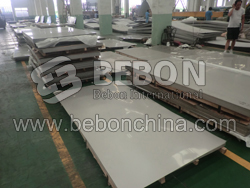Alloy 316 and Alloy 316L Difference in Corrosion Resistance
The only practical difference between Alloy 316 and Alloy 316L is carbon content, as American AISI basic grades. The carbon ranges are 0.08% maximum Alloy 316 and 0.030% maximum for the Alloy 316L.

The European grades for the Alloy 316 and Alloy 316L, 1.4401 and 1.4404, match on all elements with carbon ranges of 0.07% maximum for 1.4401 and 0.030% maximum for 1.4404. There are also high Mo versions (2.5% minimum Ni) of Alloy 316 and Alloy 316L in the EN system, 1.4436 and 1.4432 respectively. To further complicate mattters, there is also grade 1.4435 which is both high in Mo (2.5% minimum) and in Ni (12.5% minimum).
The lower carbon 'variants' (316L) were established as alternatives to the 'standards' (316) carbon range grade to overcome the risk of intercrystalline corrosion (weld decay), which was identified as a problem in the early days of the application of these steels. This can result if the steel is held in a temperature range 450 to 850°C for periods of several minutes, depending on the temperature and subsequently exposed to aggressive corrosive environments. Corrosion then takes place next to grain boundaries.
If the carbon level is below 0.030% then this intercrystalline corrosion does not take place following exposure to these temperatures, especially for the sort of times normally experienced in the heat affected zone of welds in 'thick' sections of steel.
As for weldability, there is a view that the low carbon types are easier to weld than the standard carbon types. The low carbon may makes Alloy 316 be easier to shape and form, which in turn may also affect the levels of residual stress left the steel after is forming and fitting up for welding. This may result in the 'standard' carbon types needing more force to hold them in position once fitted-up for welding, with more of a tendency to spring-back if not properly held in place.
